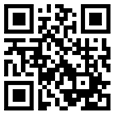0
新航道官方在线客服

阅读量:
Sports Commentary
One of the most interesting and distinctive of all uses of language is commentary. An oral reporting of ongoing activity, commentary is used in such public arenas as political ceremonies, parades, funerals, fashion shows and cooking demonstrations. The most frequently occurring type of commentary may be that connected with sports and games. In sports there are two kinds of commentary, and both are often used for the same sporting event. “play-by-play” commentary narrates the sports event, while “color –adding” or “color” commentary provides the audience with pre-event background, during-event interpretation, and post-event evaluation. Color commentary is usually conversational in style and can be a dialogue with two or more commentators.
Play-by-play commentary is of interest to linguists because it is unlike other kinds of narrative, which are typically reported in past tense. Play-by-play commentary is reported in present tense. Some examples are “he takes the lead by four” and “she’s in position.” One linguist characterizes radio play-by-play commentary as “a monologue directed at an unknown, unseen mass audience who voluntarily choose to listen…and provide no feedback to the speaker.” It is these characteristics that make this kind of commentary unlike any other type of speech situation.
The chief feature of play-by-play commentary is a highly formulaic style of presentation. There is distinctive grammar not only in the use of the present tense but also in the omission of certain elements of sentence structure. For example “Smith in close” eliminates the verb, as some newspaper headlines do. Another example is inverted word order, as in “over at third is Johnson.” Play-by-play commentary is very fluent, keeping up with the pace of the action. The rate is steady and there is little silence. The structure of the commentary is cyclical, reflecting the way most games consist of recurring sequences of short activities---as in tennis and baseball---or a limited number of activity options---as in the various kinds of football. In racing, the structure is even simpler, with the commentator informing the listener of the varying order of the competitors in a “state of play” summary, which is crucial for listeners or viewers who have just tuned in.
1.Which of the following statements is true of color commentary?
A.It narrates the action of the event in real time, using the present tense.
B.It is a monologue given to an audience that does not respond to the speaker.
C.It is steady and fluent because it must keep up with the action of the event.
D.It gives background on the event, and interprets and evaluates the event.
2.Why does the author quote a linguist in paragraph 2?
A.To describe the uniqueness of radio play-by-play
B.To show how technical sports commentary is
C.To give examples of play-by-play commentary
D.To criticize past trends in sports commentary
3.It can be inferred from the passage that the author most likely agrees with which of the following statements about sports commentary?
A.Color commentary is more important than play-by-play commentary
B.Sports commentators do not need special knowledge of the sport.
C.Commentary enhances the excitement and enjoyment of sports.
D.Sports commentators should work hard to improve their grammar.
答案:
1. D 2. A 3.C
